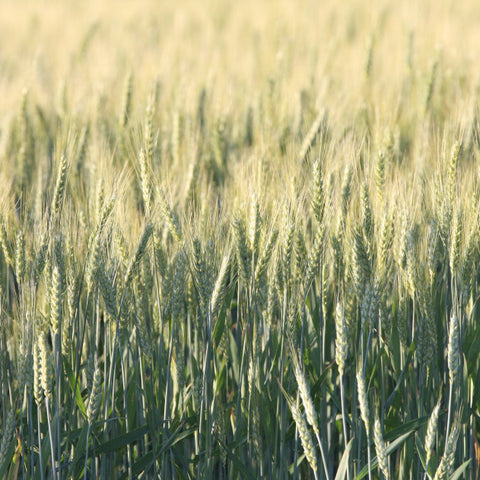The first step to excellent lawn care is understanding the pros and cons of each grass type. Many factors influence your choice of grass species, and the turf you have will affect your lawn care routine.
Are you wondering what type of grass you have or should have? We’re here to teach you all about ryegrass and the proper grass care required to make this turf grow tall.
Whether your lawn care needs include those of a residential home, commercial property, or farmland, we are here to offer you tips and tricks for all things ryegrass. Now, let’s talk about lawn care!
What is Ryegrass?
Ryegrass is a cool-season grass native to Europe and Asia but has since made its way to the states. This grass does best in mild-climate states and can be adapted to sunny or shaded yards, making it a viable option for residential and commercial lawns.
This grass does best in well-drained soils and requires plenty of water to flourish. When first seeded, ryegrass establishes quickly. For optimal results, plant ryegrass on dark, rich, and fertile soils.
There are ways you can take extra special care of your ryegrass, such as fertilization, watering your lawn and more. But first, let’s see how else ryegrass is used.
Ryegrass for Farming
Ryegrass isn’t just an excellent option for residential and commercial lawns - it is a viable option for farming. Though it doesn’t fit into every farming operation, it is an excellent choice for farmers that utilize both grazing and harvesting as a farming method.
The various agrarian benefits of ryegrass include:
- Can be high yielding in the right environment
- High nutritional value
- Option for farming or grazing
- Very palatable
Ryegrass is a high-quality grass that produces high-quality pasture. Most ryegrasses are bright green with lush but fine blades. The type of ryegrass will slightly change its physical appearance, so you can differentiate which type of grass you have or want.
Types of Ryegrass
There are several types of ryegrass grass, but the three main kinds of grass that we will be covering: annual ryegrass, perennial ryegrass, and Italian ryegrass.
Annual ryegrass is a grass variety that is an excellent choice for grazing. It can be used for spring and winter foraging grasses in the southern coastal states and is leveraged in the fall in more central, rural states.
Perennial ryegrass is a bunch-type of grass with sharp but thinner blades. It is ideal for heavy foot traffic areas as it is strong enough to withstand the extra weight, making grass care easier.
Italian ryegrass is most known for the high fiber content of its grass, which makes it great for grazing, especially in dairy cows. It produces the most leaves in the summer months. It will also flourish in the fall if the weather conditions make for a moist environment. This grass can also survive the winter season and is categorized as an annual winter grass. Italian ryegrass produces seeds in the spring months but not during the first year of seeding. Cool-season grass fertilization should take place in May then be reapplied in September, and again in October.
You can examine the characteristics of these different types of ryegrass to see which is suitable for you and your specific grass care needs. Whether cool-season or warm-season, there are plenty of ways to tell which type of grass you have.

The 411 on Lawn Fertilization
No matter what type of ryegrass you have, fertilization is an essential and helpful step in your lawn care routine that will provide you with healthy ryegrass turf.
We have an array of fertilizers that focus on growth, grass strength, and root development. Whether or not you have ryegrass, there is a fertilizer out there for your grass care needs.
Consider the benefits of going liquid and try adding our liquid lawn food into your grass care routine. Our liquid fertilizer is easy-to-use, safe for all grass types, and gives you faster results than a traditional granular fertilizer spread.
With the right products for your grass and the appropriate lawn care routine, you are well-equipped with everything you need for healthy, green grass.
Watering Your Ryegrass
Watering is a natural step that is necessary for all grass care routines. Ryegrass requires a lot of water to flourish, but just how much water is necessary? Most ryegrass types should undergo watering a few times a week if there is a lack of rainfall. Newly planted ryegrass seeds require frequent watering. Established grass will need water two to three times a week, depending on the soil moisture.
Here are some lawn watering considerations to maintain a healthy and drought-free yard:
- Consider the time of day to reduce water evaporation
- Stick to a watering schedule
- Set up a sprinkler system to make this task a no-brainer
No matter what type of grass you have, brown and crispy patches of grass are good indicators for more watering. Adequate watering is necessary for proper lawn care and is needed for all grass types to grow healthy and strong.










2 comments
We may have planted our perennial rye grass too late. We have not yet gotten word on the first frost will be here in East Texas but lo and behold. The grass is growing very nicely. It is days no and about 2 inches growth. I just hope we make it to the first frost and it is established enough And the first frost is not a hard freeze here in East Texas.
I reseeded my lawn with rye grass to keep it green during winter. Question: It’s already January, can I apply fertilizer, which fertilizer to use? How often can I water my lawn during the winter season?